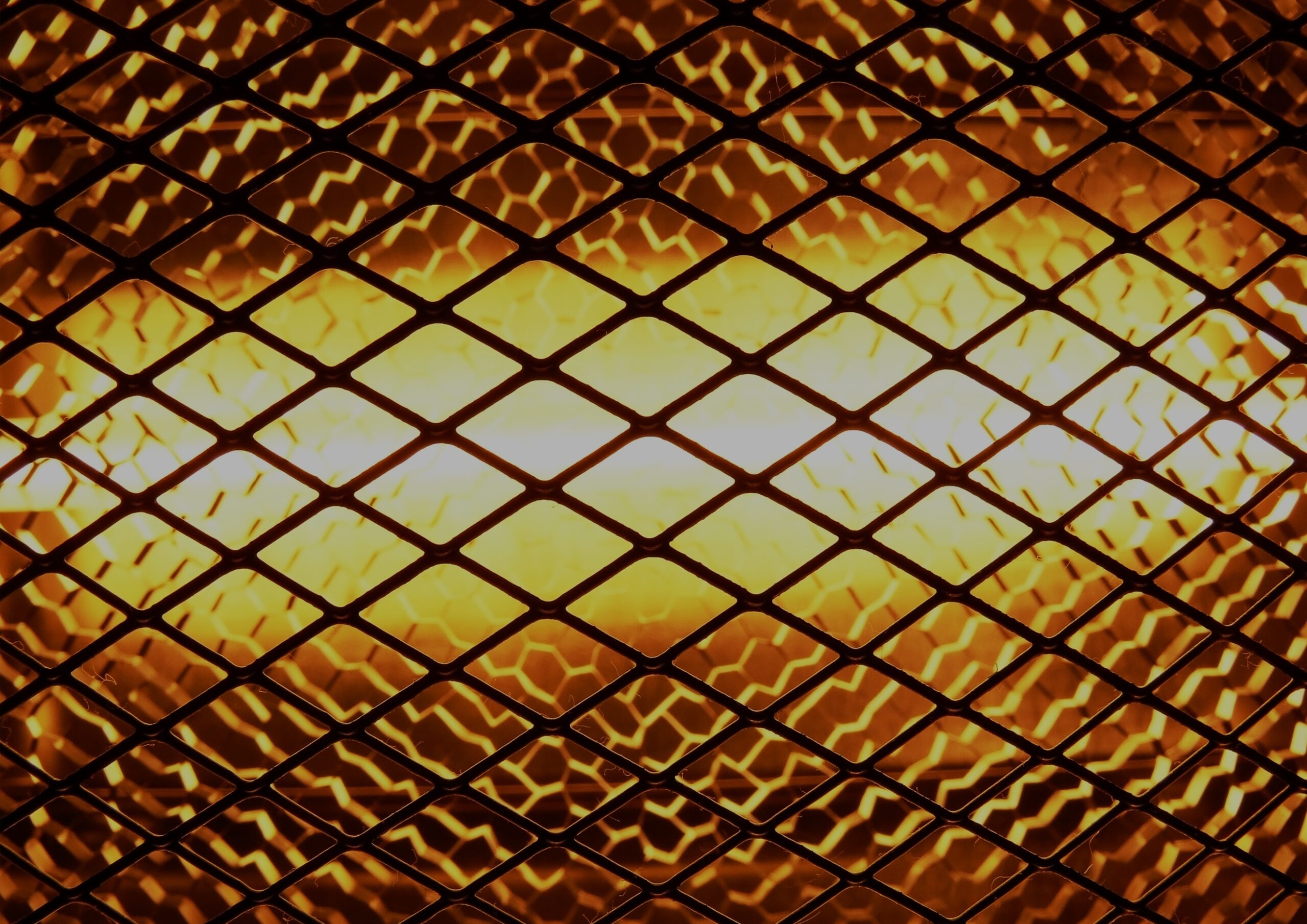Top 5 Heat-Resistant Plastics | Fast Radius
Manufacture your parts whenever you need them, with the click of a button
Materials
Mục Lục
Top 5 heat-resistant plastics

Manufacturers tend to use metals like nickel and stainless steel for high-performance applications because they are highly heat-resistant. Nickel-based alloys, for example, retain their strength in environments with high temperatures, cyclical thermal exposure, and high levels of carbon. Even though metal tends to be more heat-resistant than plastic, there are many instances where engineers would benefit from using heat-resistant plastics for their high-performance applications instead.
Heat-resistant plastics fall into two broad categories — thermosets and thermoplastics. Thermosets are plastics that harden when exposed to heat and cannot be reshaped after curing. High-performance thermoplastics are plastics that become molten when heated, solid when cooled, and can be re-melted after cooling. The structural integrity of thermoplastics is affected by factors such as the glass transition temperature (Tg) and melting point inherent to each material. Choices of high-performance thermoplastics exist that retain their structural capabilities above 150°C and short term above 250°C.
In addition to being heat-resistant, these materials are chemical-resistant, corrosion-resistant, and excellent electrical and thermal insulators. Common high-performance applications include piston components in the automotive industry, cable conduits in the aerospace industry, subsea connectors in the semiconductor industry, and more. When designing parts that will come into contact with extremely high temperatures, product teams should consider manufacturing with these top five heat-resistant plastics.
Top 5 heat-resistant plastics
Thermoplastics gain their heat-resistance from their molecular structure. When rigid aromatic rings are added to the resin instead of aliphatic groups, the backbone of the molecular chain is restricted and fortified in such a way that two chemical links must be broken to break the chain. With this new structure, a thermoplastic’s chemical and heat resistance can be equal to or better than a thermoset’s.
Here are five plastics that can handle the heat.
1. Polyetherimide (PEI)
ULTEM®, the branded name for polyetherimide (PEI), is one of the few commercially available amorphous thermoplastics on the market today. It’s strong, chemical- and flame-resistant, and has been a staple in the manufacturing industry for over 35 years. ULTEM stands out because it has the highest dielectric strength of any high-performance thermoplastic.
This material has an extremely high melting point of 219°C and a maximum continuous service temperature of 170°C, making it ideal for circuit boards, food sterilization equipment and, most notably, aircraft parts. ULTEM is one of the few resins for use in the commercial aerospace industry — it beats out other thermoplastics in creep resistance and holds up well in the presence of various fuels and coolants. However, it tends to crack in the presence of polar chlorinated solvents. This material can be found in fire blockers and airplane seat covers.
 An example of a part made with ULTEM, which is not compatible with desktop printers.
An example of a part made with ULTEM, which is not compatible with desktop printers.
ULTEM is fairly expensive like many of the other plastics on this list. Also, it has a lower impact strength and usable temperature than PEEK.
Advantages of ULTEM:
- Better creep resistance than thermoplastics
- Holds up against fuels and coolants
Disadvantages of ULTEM:
- Tends to crack in the presences of polar chlorinated solvents
- Fairly expensive
2. Polyether ether ketone (PEEK)
PEEK, short for polyether ether ketone, is a semi-crystalline, high-performance engineering thermoplastic that’s resistant to chemicals, wear, fatigue, creep, and heat. This material is so strong and adaptable to harsh environments that manufacturers use it as a replacement for metal in many applications, no matter the temperature. PEEK can withstand temperatures as high as 310°C for short periods and has a melting point of over 371°C. What’s more, it has the highest tensile and flexural strength of any high-performance polymer.
Due to its metal-like durability, PEEK is widely used for a variety of medical devices, active components in car transmissions, and aircraft exterior parts. It has the added advantage of being easy to machine via injection molding or extrusion, and solid PEEK is compatible with CNC machining.
This popular thermoplastic does have a couple of small drawbacks, including its susceptibility to UV light and certain acids. However, PEEK is still a highly versatile thermoplastic that all engineers should have in their repertoire.
Advantages of PEEK:
- Strong and adaptable to harsh environments
- Highest tensile and flexural strength
- Easy injection molding machining capabilities
- Compatible with cnc machining
Disadvantages of PEEK:
- Susceptibility to UV light and certain acids
3. Polytetrafluoroethylene (PTFE)
PTFE, commonly known as Teflon, is a soft, heat-resistant, low-friction plastic with exceptional chemical resistance. It has high flexural strength, adequate weathering resistance, and good electrical insulating power in both hot and wet environments.
PTFE is unique because it’s almost completely chemically inert and highly insoluble in most solvents, making it ideal for high-temperature applications. PTFE has one of the highest melting points of any thermoplastic at 327°C, and a very large operating temperature range. It’s thermally stable enough to be used anywhere between -200°C and +260°C.
 Non-stick pots and pans are often coated in PTFE because of its low friction and strong anti-adhesion properties.
Non-stick pots and pans are often coated in PTFE because of its low friction and strong anti-adhesion properties.
PTFE is most commonly known for its commercial applications. It’s also used to protect pipes from corrosive materials, coat heat exchangers, and provide insulation for electrical components.
PTFE excels at extremely high and low temperatures, but its mechanical properties are typically inferior to comparable plastics at room temperature. It’s sensitive to creep, abrasion, and radiation, and its fumes can be toxic. Also, it’s worth noting that PTFE is fairly expensive to process.
Advantages of PTFE:
- High flexural strength
- Adequate weathering resistance
- Good electrical insulating power in both hot and wet environments
Disadvantages of PTFE:
- Inferior to comparable plastics at room temperature
- Sensitive to creep, abrasion, and radiation
- Fes can be toxic
- Fairly expensive to process
4. Polybenzimidazole (PBI)
Polybenzimidazole (PBI) has the highest heat and wear resistance, strength, and mechanical property stability of any engineering thermoplastic on the market today. PBI fibers have no known melting point, don’t burn, and don’t stick to other plastics. This material has a maximum continuous service temperature of 398°C in inert environments, 343°C in air, and short term exposure potential up to a blistering 537°C.
 Due to its high stability and extreme heat resistance, PBI is used for only the most critical applications like astronaut spacesuits, firefighters’ protective apparel, and racecar driver suits.
Due to its high stability and extreme heat resistance, PBI is used for only the most critical applications like astronaut spacesuits, firefighters’ protective apparel, and racecar driver suits.
For all of its strengths, PBI is incredibly expensive and difficult to manufacture. Engineers often have to use diamond tools to machine this material, which drives costs up even more. From a design standpoint, one major drawback to PBI is its notch sensitivity. Product designers must be careful to avoid any and all sharp edges or corners and smooth all surface finishes.
Advantages of PBI:
- High stability
- Extreme heat resistance – highest of any thermoplastic on the market today
- Fibers have no melting point – they don’t burn or stick to other plastics
Disadvantages of PBI:
- Expensive and difficult to manufacture
- High notch sensitivity
5. Polydicyclopentadiene (pDCPD)
Polydicyclopentadiene (pDCPD) is a custom-engineered thermoset polymer designed to deliver an excellent combination of chemical, corrosion, and heat resistance, plus stiffness and impact strength. This material blends the molding flexibility of a thermoset with the high-performance characteristics of top engineering thermoplastics. It has a heat deflection temperature of up to 120°C.
pDCPD is unique because it has virtually no part size or weight limitations — parts with variable wall thicknesses, molded stiffening ribs, and more won’t slow down production. pDCPD is a relatively new material and its applications are limited as of yet, but it’s shown promise in corrosion-resistant chemical process equipment, septic tanks, and water treatment equipment.
Advantages of pDCPD:
- Combines chemical, corrosion, and heat resistance
- No part size or weight limitation – won’t slow down production
- Blends molding flexibility with high performance
Disadvantages of pDCPD:
- New material: applications are limited
Can manufacturers improve heat resistance?
Engineers and manufacturers can turn up the heat and improve the performance of most kinds of plastics by using additives and/or heat stabilizers. The three most common types of additives are antioxidants, flame retardants, and processing aids. Each additive provides a different feature and contributes to a polymer’s durability.
Heat stabilizers protect a polymer from heat damage during manufacturing or during the final part’s normal use, and they’re added to the majority of polymers today. Heat stabilizers can also preserve the polymer’s appearance, strength, and elasticity.
Choose an expert manufacturer to help with material selection
For high-temperature applications, any one of these high-performance plastics can really take the heat. However, not just any material will do. Engineers must do their research to ensure they’re choosing the heat-resistant plastic that’s the best fit for their particular application. If engineers choose the wrong material, they risk compromising the functionality of their part and having to start from scratch.
An experienced manufacturing partner like Fast Radius can make the material selection process stress-free thanks to our expert engineering advisory services. We can help any product team choose the right material for their part and unique requirements.
Beyond material selection, our team of seasoned engineers and designers are prepared to streamline the product development process and deliver parts of superior quality at affordable rates and lightning fast timelines — so every customer can rest assured that they are getting the best product for the best deal. Contact us today for a quote.
For more material guides and information about manufacturing with plastics, check out the Fast Radius resource center.
Ready to make your parts with Fast Radius?
Start your quote















![Toni Kroos là ai? [ sự thật về tiểu sử đầy đủ Toni Kroos ]](https://evbn.org/wp-content/uploads/New-Project-6635-1671934592.jpg)


